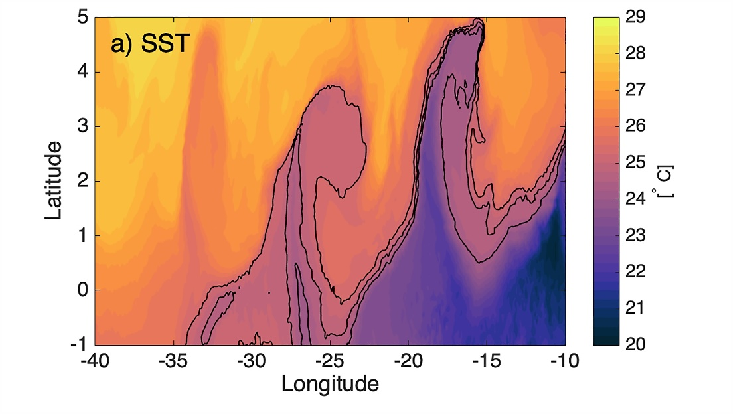PublicationSeasonality of subsurface shear instabilities at Tropical Instability Wave fronts in the Atlantic Ocean
14 October 2024

Photo: Modified from Specht et al. 2024.
How do subsurface instabilities at TIW fronts change over time? New publication in Journal of Geophysical Research.
Tropical Instability Waves (TIWs) generate alternating warm and cold temperatures at the surface of
the tropical oceans, leading to sharp temperature fronts. Previous studies have shown that mixing can occur along these fronts, but how this mixing changes over time is still unclear. Therefore, our research focused on how subsurface instabilities at TIW fronts change over time. We analyzed the output of a high-resolution ocean simulation and found that the instabilities at the TIW fronts in the Atlantic can reach up to 100 m deep and follow a seasonal cycle. These instabilities occur most frequently in summer, when the difference in zonal current speeds is greatest. We found that the shear at the TIW fronts alone is not sufficient to cause these deep-reaching instabilities; the general background shear must also be strong. This background shear changes over the seasons.
Specht, Mia Sophie, Johann Jungclaus, and Jürgen Bader. Seasonality of Subsurface Shear Instabilities at Tropical Instability Wave Fronts in the Atlantic Ocean in a High-Resolution Simulation. Journal of Geophysical Research: Oceans 129, no. 8 (2024): e2023JC020041. https://doi.org/10.1029/2023JC020041.


